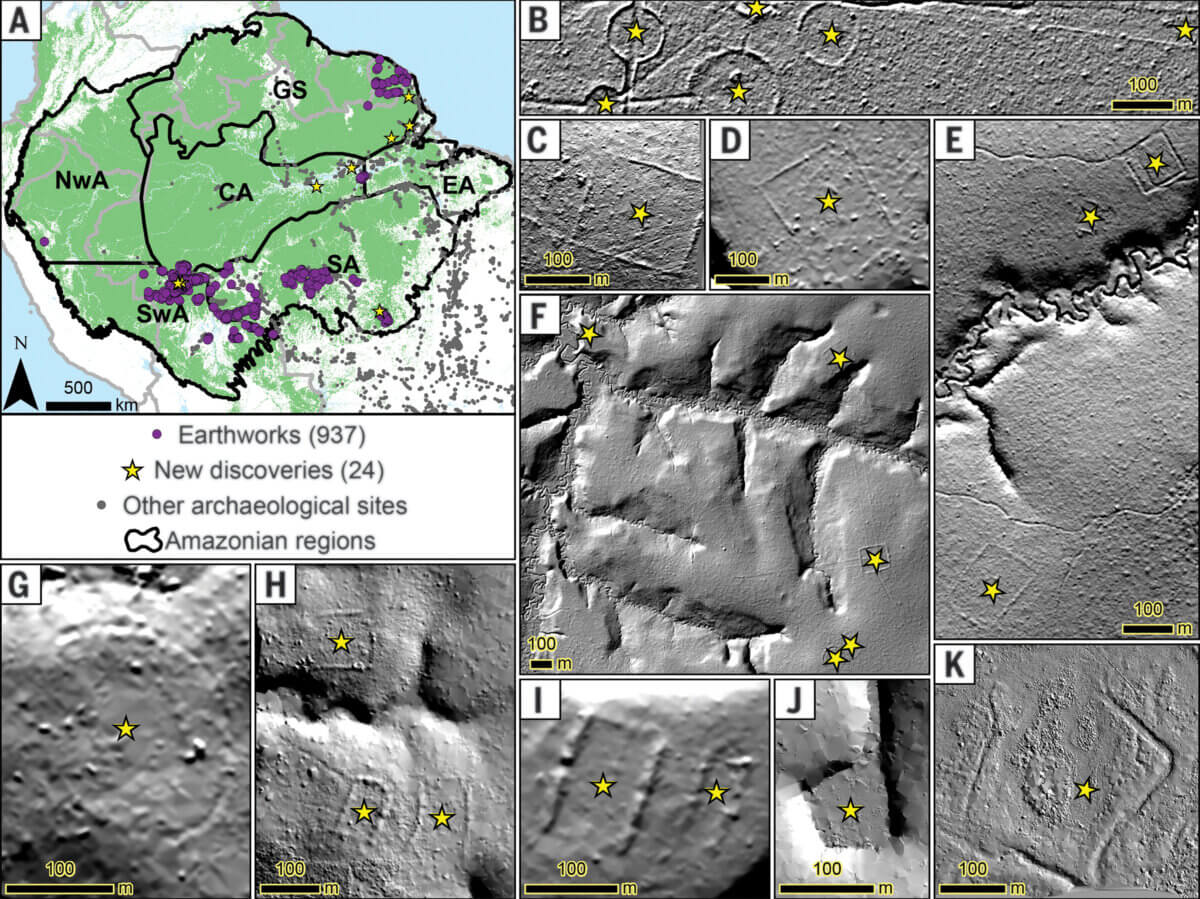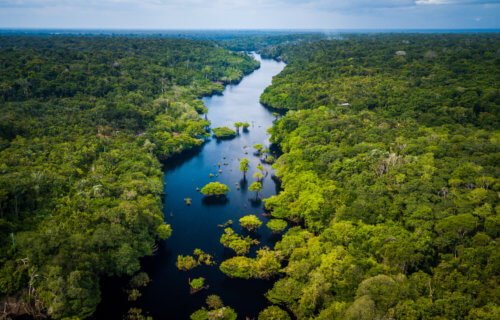SAO PAULO, Brazil — The vast Amazon basin, stretching across multiple countries, could be hiding more than 10,000 ancient archaeological sites yet to be uncovered, a new study reveals. This revelation provides fresh insight into the role of pre-Columbian societies and their lasting influence on the Amazon region.
Pre-Columbian societies refer to the indigenous cultures that thrived in the Americas before the arrival of Christopher Columbus. These societies have a rich history in the Amazon, spanning more than 12,000 years. Over time, they’ve constructed a myriad of earthwork structures and even transformed vast landscapes, impacting the composition of modern-day forests.
Despite their vast influence, understanding the extent of their settlement in the dense Amazonian forests has been a challenge. The thick vegetation often conceals archaeological remains, making it difficult to determine the true scale of past civilizations in the region. As a result, no one has ever been able to catalog all the pre-Columbian sites throughout the Amazon.
Advancements in technology are offering a solution. A remote sensing technique called airborne LIDAR (light detection and ranging) can detect minor topographical changes on the ground, even under a thick canopy of trees. This has led to significant breakthroughs in discovering ancient structures in heavily forested areas across both Central and South America.

By utilizing LIDAR, Brazilian researchers surveyed a 5,315-square-kilometer area of the Amazon basin. This investigation led to the discovery of 24 previously unknown human-made earthworks, ranging from fortified villages and ceremonial structures to mysterious symbols carved into the land known as geoglyphs.
The area covered by the LIDAR survey represents only a tiny fraction (0.08%) of the Amazon’s vast expanse. To gauge the broader implications, researchers incorporated their findings with data from known archaeological sites. They then used a predictive spatial distribution model to estimate the potential number of undiscovered sites. The results suggest that there could be anywhere from 10,272 to 23,648 large pre-Columbian structures still hidden, especially in southwestern parts of the Amazon.
The team identified a connection between predicted earthwork sites and areas abundant with domesticated tree species. This suggests that these ancient societies actively managed and shaped the Amazonian forests, practices that continue to influence the ecology of the region.
“Amazonian forests clearly merit protection not only for their ecological and environmental value but also for their high archaeological, social, and biocultural value, which can teach modern society how to sustainably manage its natural resources,” the study authors say in a media release.
The study is published in the journal Science.
You might also be interested in:
- Amazing archaeological finds dating back to 10,000 BC unearthed just 8 miles from Stonehenge
- Amazon rainforest has lost almost all its resilience, reaching an environmental ‘tipping point’
- Ruins of 3,400-year-old lost city uncovered in Iraq from extreme drought

